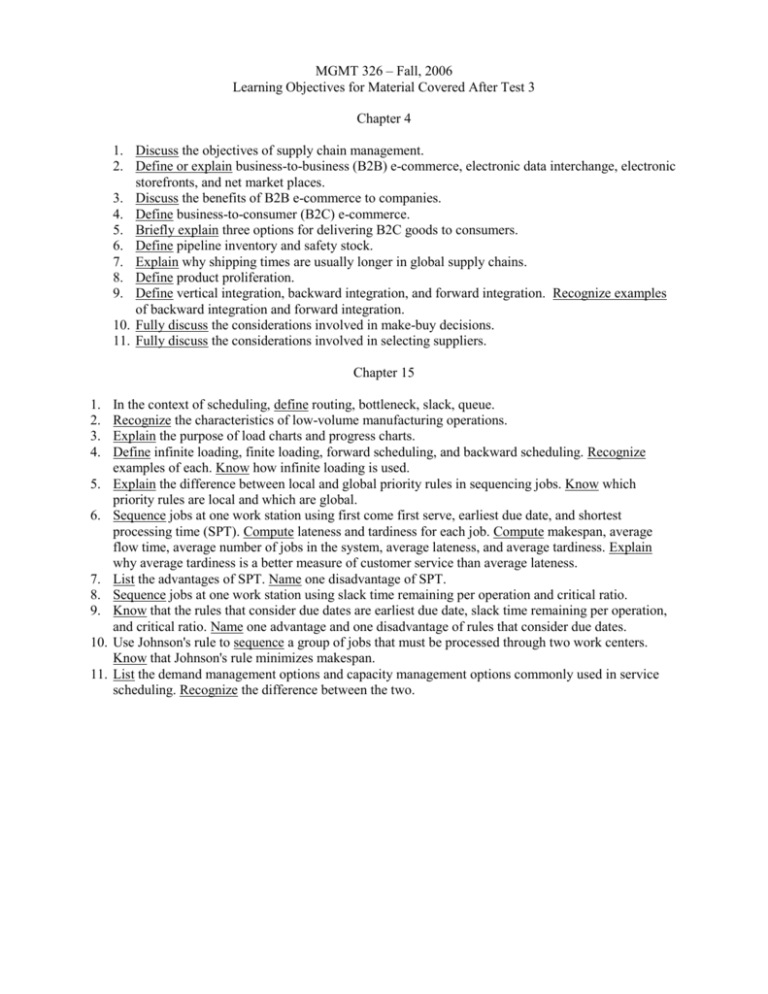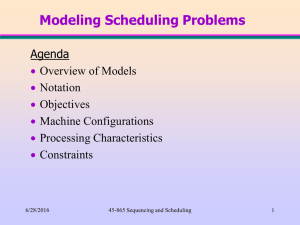MGMT 326 – Fall, 2006 Learning Objectives for Material Covered
advertisement

MGMT 326 – Fall, 2006 Learning Objectives for Material Covered After Test 3 Chapter 4 1. Discuss the objectives of supply chain management. 2. Define or explain business-to-business (B2B) e-commerce, electronic data interchange, electronic storefronts, and net market places. 3. Discuss the benefits of B2B e-commerce to companies. 4. Define business-to-consumer (B2C) e-commerce. 5. Briefly explain three options for delivering B2C goods to consumers. 6. Define pipeline inventory and safety stock. 7. Explain why shipping times are usually longer in global supply chains. 8. Define product proliferation. 9. Define vertical integration, backward integration, and forward integration. Recognize examples of backward integration and forward integration. 10. Fully discuss the considerations involved in make-buy decisions. 11. Fully discuss the considerations involved in selecting suppliers. Chapter 15 1. 2. 3. 4. 5. 6. 7. 8. 9. 10. 11. In the context of scheduling, define routing, bottleneck, slack, queue. Recognize the characteristics of low-volume manufacturing operations. Explain the purpose of load charts and progress charts. Define infinite loading, finite loading, forward scheduling, and backward scheduling. Recognize examples of each. Know how infinite loading is used. Explain the difference between local and global priority rules in sequencing jobs. Know which priority rules are local and which are global. Sequence jobs at one work station using first come first serve, earliest due date, and shortest processing time (SPT). Compute lateness and tardiness for each job. Compute makespan, average flow time, average number of jobs in the system, average lateness, and average tardiness. Explain why average tardiness is a better measure of customer service than average lateness. List the advantages of SPT. Name one disadvantage of SPT. Sequence jobs at one work station using slack time remaining per operation and critical ratio. Know that the rules that consider due dates are earliest due date, slack time remaining per operation, and critical ratio. Name one advantage and one disadvantage of rules that consider due dates. Use Johnson's rule to sequence a group of jobs that must be processed through two work centers. Know that Johnson's rule minimizes makespan. List the demand management options and capacity management options commonly used in service scheduling. Recognize the difference between the two.











